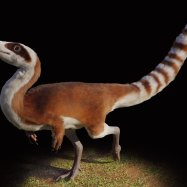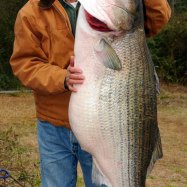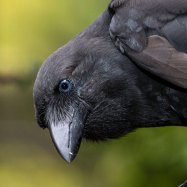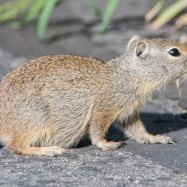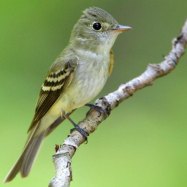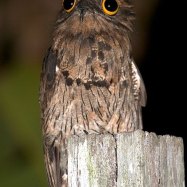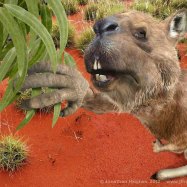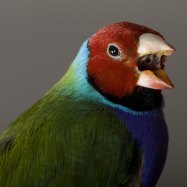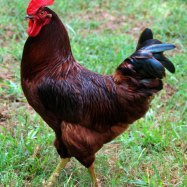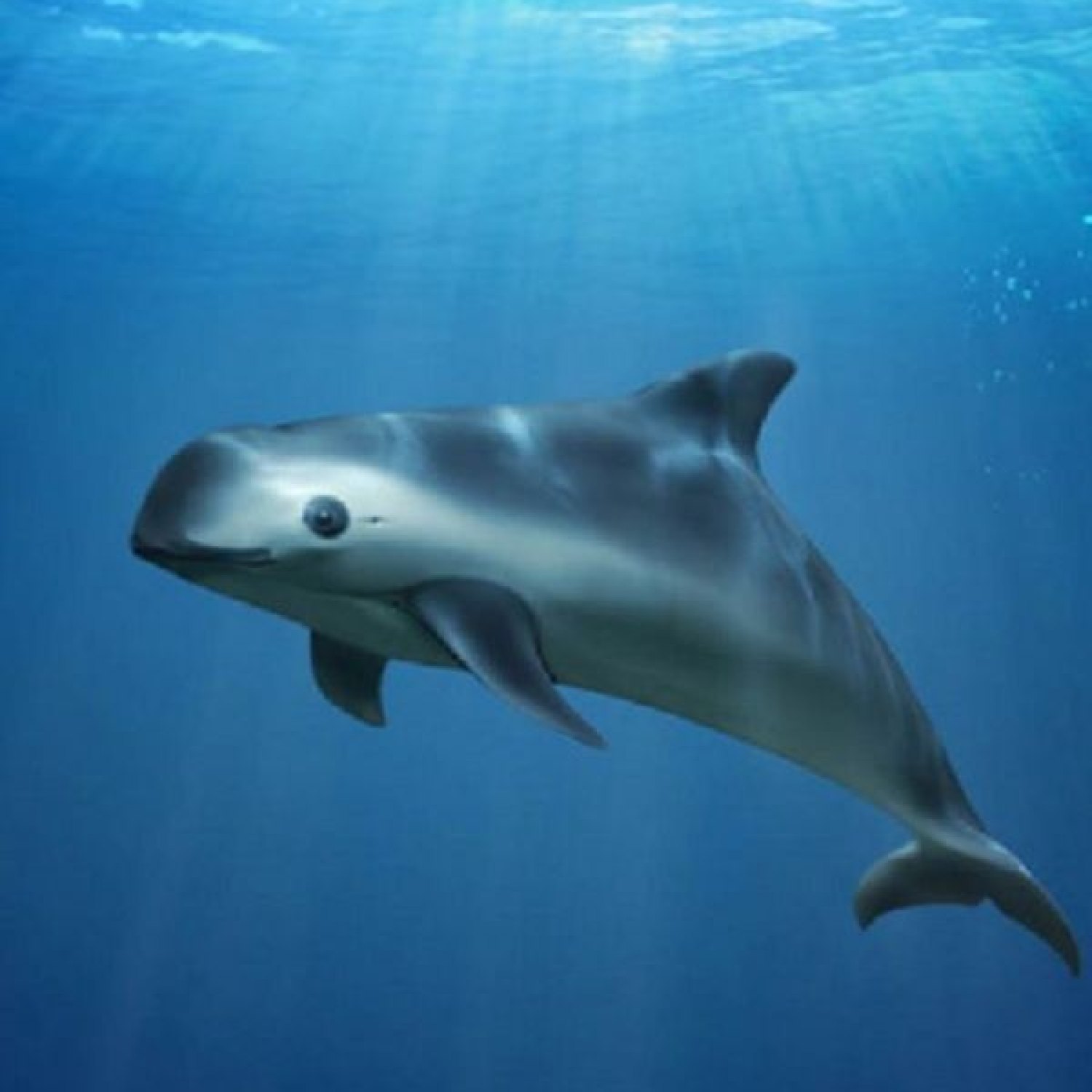
Vaquita
1.4 to 1.5 meters
Meet the Vaquita, a small and stocky porpoise found in the waters of Northwestern Mexico. This small creature belongs to the Phocoenidae family and can grow up to 1.5 meters in length. Sadly, due to human activities, the vaquita is critically endangered. Help raise awareness and protect this beautiful animal today. #SaveTheVaquita #EndangeredSpecies
Animal Details Summary:
Common Name: Vaquita
Kingdom: Animalia
Habitat: Marine
The Tiny but Mighty Vaquita: The Endangered Porpoise of the Gulf of California
It's hard to imagine that in the vast expanse of the ocean, a creature as small as the vaquita exists. But this small porpoise, known for its shy and elusive nature, has captured the hearts of many marine enthusiasts and environmentalists. Despite its unique and charming qualities, the vaquita is under threat of extinction, making it one of the most endangered mammals in the world today.What is a Vaquita?
Scientifically known as Phocoena sinus, the vaquita is a member of the Order Cetartiodactyla, which includes both whales and dolphins Vaquita. Its common name, vaquita, means "little cow" in Spanish, a nod to its small size and stocky body shape. This rare species is only found in the Gulf of California and is the only porpoise species in this region.Appearance and Habitat
The vaquita's body is a striking grey color with dark patches, giving it a unique and attractive appearance. It is small, measuring only 1.4 to 1.5 meters in length, making it one of the smallest cetaceans. Its body shape is similar to that of a dolphin, with a pointed snout and small dorsal fin. Its flippers are also proportionally small, making it easily distinguishable from other porpoise species.The vaquita is a marine mammal, meaning it spends its entire life in the ocean Vampire Bat. Specifically, it can only be found in the Upper Gulf of California in its native country of Mexico. The waters in this region are shallow and warm, providing the perfect environment for the vaquita's survival.
Feeding and Behavior
The vaquita is a carnivorous animal, meaning it primarily feeds on fish, squid, and crustaceans. They use echolocation to detect their prey, emitting high-frequency clicks that bounce off objects and return to the vaquita, giving them a sense of their surroundings. This behavior is crucial in helping them navigate and find food in the murky waters of the Gulf of California.Despite being social animals, vaquitas are elusive creatures, and little is known about their behavior in the wild. They are primarily solitary animals, with the exception of mothers and their calves. They are known to be shy and avoid human interaction, making them challenging to study.
The Threat of Extinction
The vaquita is facing a crisis that could potentially wipe out the entire species from our planet. As of 2021, there are less than 10 individuals left in the wild. This massive decline is a result of various human activities, including fishing and pollution.The main threat to the vaquita comes from illegal fishing practices in its habitat. These porpoises often get caught in gillnets, which are widely used to catch fish and shrimp. Sadly, vaquitas are unable to escape these nets and drown, leading to a sharp decline in their population.
Furthermore, the Gulf of California is facing high levels of pollution from industries and land-based activities. This pollution not only affects the water quality but also contaminates the vaquita's food sources, making it difficult for them to survive.
Conservation Efforts
In 1997, the vaquita was listed as critically endangered on the International Union for Conservation of Nature (IUCN) Red List. Since then, numerous conservation efforts have been put in place to protect this species and prevent its extinction. In 2005, the Mexican government declared a vaquita refuge area, which prohibited commercial fishing in the region.In 2015, a two-year ban on the use of gillnets was put in place, and in 2017, a permanent ban was announced. Moreover, conservation organizations have set up monitoring systems, patrols, and alternative fishing methods to protect the vaquita and its habitat.
Unfortunately, these efforts have not yielded significant results, with the vaquita population continuing to decline rapidly. However, there is still hope for the future through continued conservation efforts and public awareness.
What You Can Do
As individuals, we can also play a part in protecting the vaquita and other endangered species. One way to do this is by being mindful of the seafood we consume. We can choose sustainably caught seafood or opt for plant-based alternatives. Additionally, we can support conservation organizations that work towards protecting the vaquita and its habitat.Awareness is also crucial in efforts to save the vaquita. By spreading the word and educating others about this endangered species, we can shed light on the dangers they face and inspire people to take action.
In Conclusion
The vaquita may be small, but its impact on the marine ecosystem is significant. As this elusive species continues to face threats, it is essential that we all play a role in its conservation. By understanding the vaquita's unique qualities, their struggle for survival, and the efforts to protect them, we can all come together to ensure that this charming porpoise does not go extinct. The vaquita is a symbol of hope, reminding us that it is never too late to make a positive change for our planet and its inhabitants. Let us all work towards a future where the vaquita, and all other endangered species, can thrive.

Vaquita
Animal Details Vaquita - Scientific Name: Phocoena sinus
- Category: Animals V
- Scientific Name: Phocoena sinus
- Common Name: Vaquita
- Kingdom: Animalia
- Phylum: Chordata
- Class: Mammalia
- Order: Cetartiodactyla
- Family: Phocoenidae
- Habitat: Marine
- Feeding Method: Carnivorous
- Geographical Distribution: Gulf of California
- Country of Origin: Mexico
- Location: Northwestern Mexico
- Animal Coloration: Gray with dark patches
- Body Shape: Small and stocky
- Length: 1.4 to 1.5 meters
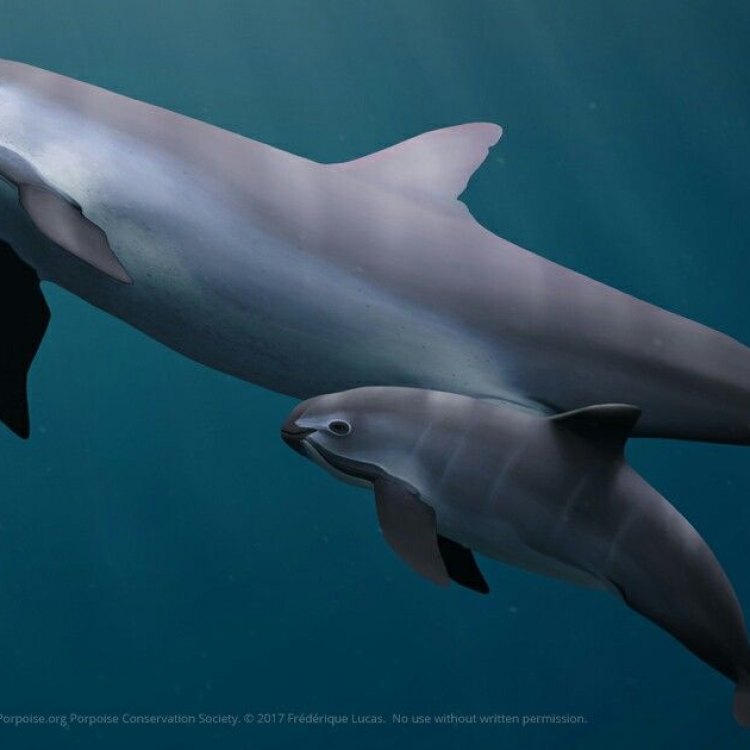
Vaquita
- Adult Size: Small
- Average Lifespan: Up to 20 years
- Reproduction: Sexual
- Reproductive Behavior: Unknown
- Sound or Call: Clicking and whistling sounds
- Migration Pattern: Non-migratory
- Social Groups: Solitary or small groups
- Behavior: Shy and elusive
- Threats: Illegal fishing, bycatch, pollution
- Conservation Status: Critically Endangered
- Impact on Ecosystem: Top-down control of prey population
- Human Use: None
- Distinctive Features: Dark rings around the eyes and lips
- Interesting Facts: Vaquitas are the smallest and rarest marine mammal species
- Predator: No natural predators
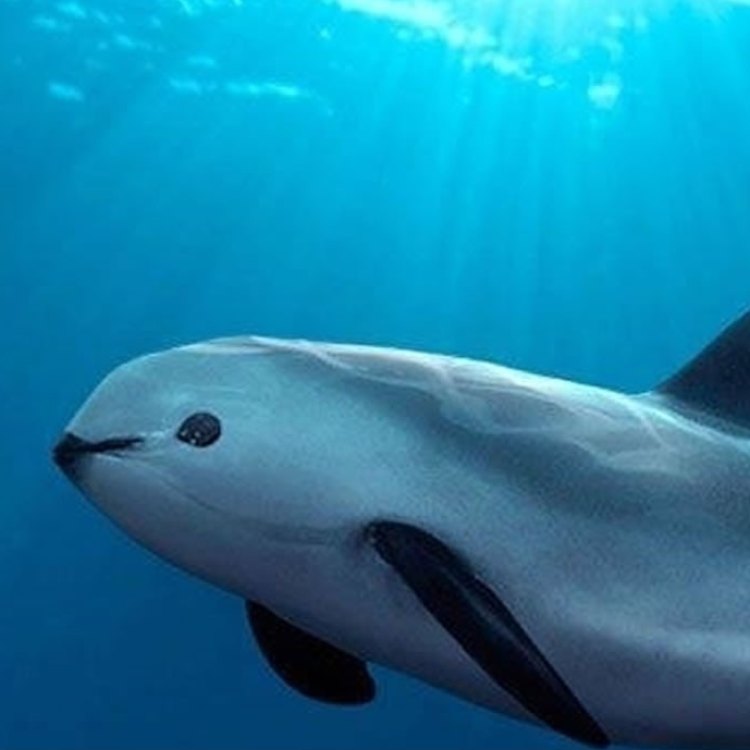
Phocoena sinus
The Elusive Vaquita: The Endangered Treasure of the Sea
It is a warm summer morning in the Gulf of California, and the calm waters hide a mysterious and elusive creature that calls this place home. Known as the "little cow of the sea," the vaquita is one of the smallest and rarest marine mammal species in the world. With only around 10 individuals left in the wild, the vaquita is on the brink of extinction. Despite its small size, this creature plays a crucial role in its ecosystem, and its disappearance could have devastating consequences PeaceOfAnimals.Com. In this article, we will dive deep into the world of the vaquita and learn about its unique features, behavior, and the threats it faces.The vaquita, or Phocoena sinus, is a small porpoise that inhabits a small area in the northern part of the Gulf of California, also known as the Sea of Cortez. They are the smallest species of the porpoise family, measuring only around 4 feet in length and weighing less than 120 pounds. This petite mammal sports a unique pattern of black and gray, with a dark ring around its eyes and lips, making it easily identifiable.
Vaquitas have a relatively long lifespan, with some living up to 20 years in the wild. However, due to the population decline, it is challenging to determine the average lifespan accurately. These creatures reach sexual maturity between the ages of three to six years, and their reproductive behavior is still a mystery to scientists. As they are not commonly spotted in the wild, their mating habits and reproductive cycle are yet to be fully understood.
What we do know is that vaquitas are sexual reproducers, meaning they require male and female to reproduce Vampire Squid. Their breeding season is believed to take place between late spring and early summer. The gestation period lasts around 10 to 11 months, and females typically give birth to one calf at a time. The calf stays with its mother until it is independent, which is around six to eight months. These limited reproductive capabilities make it challenging for the vaquita population to rebound quickly, making them more vulnerable to extinction.
Shy and elusive, vaquitas have rarely been observed in their natural habitat. They are solitary animals, occasionally forming small groups with other vaquitas for feeding and socializing. They have been known to click and whistle as their primary form of communication, and their distinct vocalizations can be heard up to two miles away. These calls are believed to help them navigate, locate food, and communicate with other vaquitas.
One of the most fascinating things about vaquitas is their unique migration pattern. Unlike many marine mammal species, vaquitas are non-migratory, meaning they stay in the same area year-round. They are found in shallow, coastal waters of less than 160 feet, making them vulnerable to illegal fishing activities.
Unfortunately, the biggest threat to vaquitas is human activity. They are often caught as bycatch in fishing nets used to catch totoaba, a critically endangered fish. The totoaba's swim bladder is considered a delicacy in China, where it is believed to have medicinal properties, making it a highly profitable and illegal market. This has led to the use of illegal gillnets in vaquitas' habitat, resulting in the deaths of many of these porpoises.
Pollution is another significant threat to the vaquita population. The Gulf of California is highly polluted due to human activities such as fishing and shipping. This pollution can have detrimental effects on the vaquitas' health and reproductive capabilities.
Due to these threats, the vaquita population has declined rapidly over the years. In 2019, only around 10 vaquitas were estimated to be left in the wild, making them the most endangered marine mammal species in the world. In 2017, a joint effort between the Mexican government and conservation organizations was launched to save the vaquita, called the "VaquitaCPR" project. The project aimed to capture vaquitas from the wild and place them in a protective sanctuary in the Gulf of California.
However, the project was unsuccessful, and the last few remaining vaquitas in captivity died due to the stress of being held in captivity. This has been a significant setback for conservation efforts and has also raised concerns about the impact of captivity on vaquitas. The vaquita's situation is dire, and unless immediate and effective action is taken, this precious species may disappear from the face of the earth forever.
As the top-down control of prey population, vaquitas play an essential role in their ecosystem. They primarily feed on small fish, squid, and crustaceans, keeping their populations in check. If vaquitas were to go extinct, their prey population would likely explode, leading to imbalances in the ecosystem and potentially causing harm to other marine species in the area.
Despite their importance in the ecosystem, the human use of vaquitas is minimal. However, their unique features and rarity make them a prime target for illegal trade and use for tourist attractions. Some individuals have also been captured and held in captivity, where they do not thrive well. As a critically endangered species, it is crucial to protect the remaining vaquitas and educate communities about the importance of preserving this special animal.
In conclusion, the vaquita is an elusive and incredibly endangered treasure of the sea. This unique and petite porpoise plays a vital role in its ecosystem, and its disappearance would have severe consequences. While their future may seem bleak, there is still hope for the vaquita. The Mexican government has recently implemented stricter fishing regulations and has banned gillnets in the vaquita's habitat. Conservation efforts are also ongoing, and with continued support and action, we can work towards saving this remarkable creature from extinction. It is our responsibility to protect and preserve the vaquita for generations to come, for it is a treasure that needs to be cherished and protected.
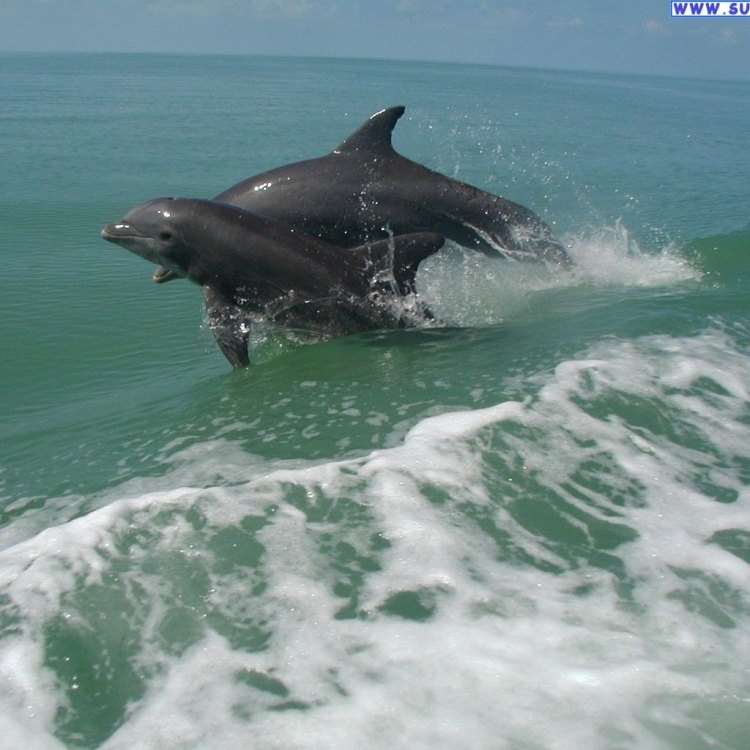
The Tiny but Mighty Vaquita: The Endangered Porpoise of the Gulf of California
Disclaimer: The content provided is for informational purposes only. We cannot guarantee the accuracy of the information on this page 100%. All information provided here may change without prior notice.

